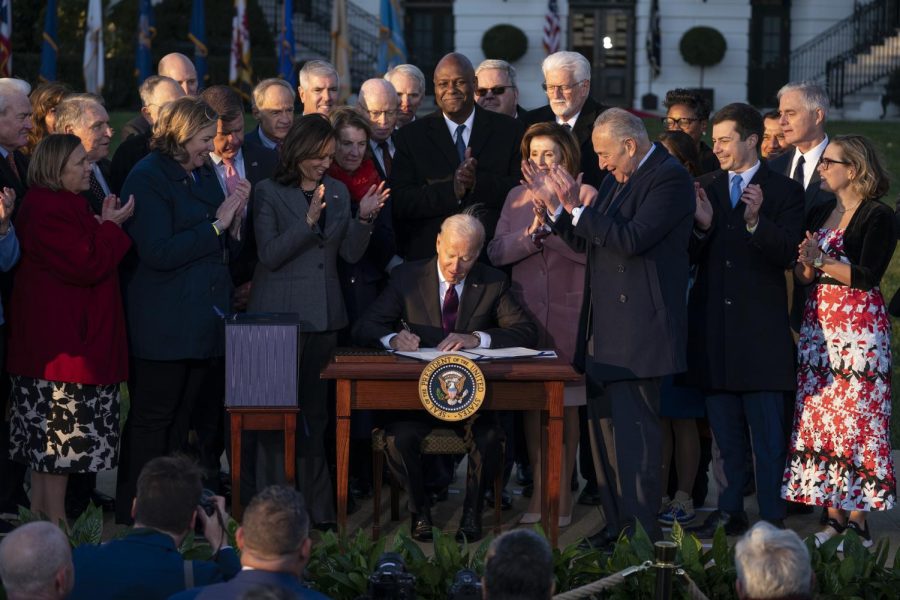Infrastructure bill passes, promises rail developments for Ohio
President Joe Biden signs the “Infrastructure Investment and Jobs Act” during an event on the South Lawn of the White House, Monday, Nov. 15, 2021, in Washington.
Nov 17, 2021
The infrastructure bill, following weeks of contention, has finally been passed. Ramifications of the bill in regards to Ohio may potentially bring good tidings for both casual commuters and rail enthusiasts.
Amtrak has unveiled a plan to connect four cities in Ohio by rail: Cleveland, Columbus, Cincinnati and Dayton. The list of stops on this route also includes Hopkins International Airport (in Cleveland), Crestline, Delaware, Springfield, and Sharonville, Ohio. Connections to local trains such as Cleveland’s RTA light rail system will also be available. Further services to Buffalo, Detroit and Chicago from Cleveland are also in the planning stage.
Aside from the benefits of essentially linking up John Carroll University (along with other Cleveland-based colleges) to universities such as Xavier in Cincinnati and Ohio State in Columbus, there are other advantages to traveling via rails that are simply not available when using a car or even a bus: an easier time in tricky weather conditions, comfortable cabin seats, free wifi, the ability to use a laptop computer, and perhaps most importantly, an onboard bathroom. Longer-haul routes across state lines may even have food and sleeping arrangements. Think of an airliner, but with more space and better seating.
Additionally, people who do not wish to drive due to personal preferences, or who cannot drive because they do not have a car, benefit from reliable rail service. For the environmentalists, railroads (particularly electric ones) produce far less CO2 emissions than road vehicles and aircraft, according to the BBC.
This is not to say that railways do not have drawbacks: delays due to sharing tracks with freight trains can cause chronic lateness during rail service. With the right track upgrades, however, these can be avoided.
Any improvements to Ohio’s rail network hinges on cooperation between Amtrak and the state and local governments. Many, including Mayor Frank Jackson, have supported the idea. Electing leaders who promote this plan will be a sure first step to bringing back the glory days when a web of iron rails linked the cities of Ohio.












